Text by Juliette Wallace
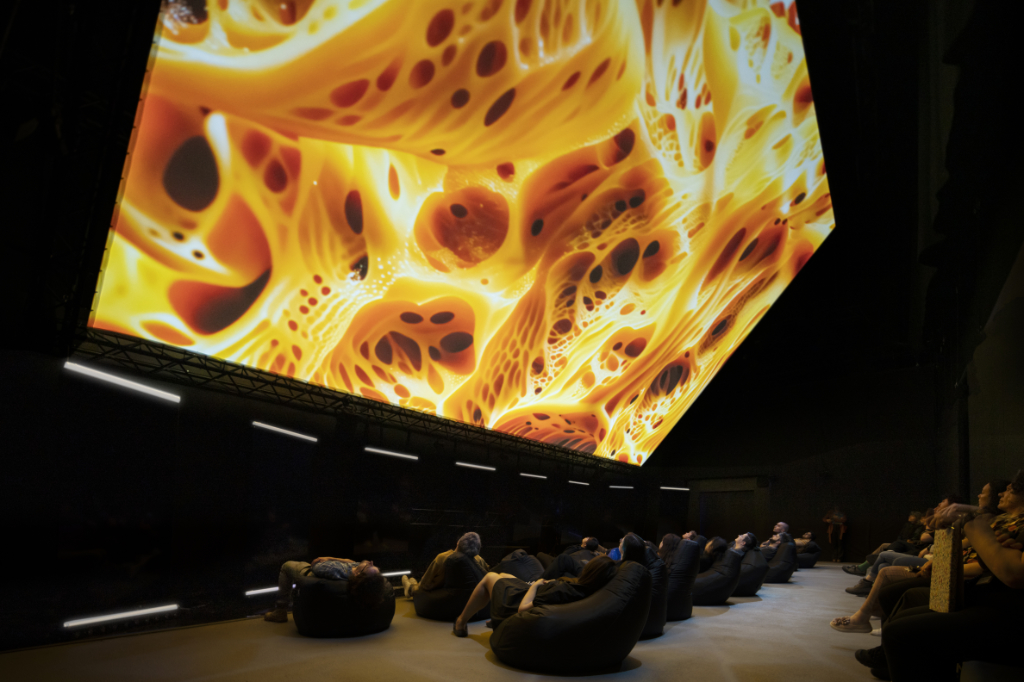
Most of us have sweet memories of being kids, sitting at the breakfast table propped on our knees and looking up at the big, grinning cartoon face of the mascot of our favourite cereal – Tony the Tiger; the Sugar Puff Monster; Rice, Crackle and Pop – invariably with their accompanying catchphrase running through our heads as we shovell another overladen spoon of sweet, milky breakfast into our mouths. They’re nice memories, harmless memories of the innocence of youth and the excitement of a child around imaginary worlds. Perfectly healthy, wholesome and nostalgic. Or are they? This summer, Factory International and Marshmallow Laser Feast (MLF) dig deep into the worlds of appetite, human desire and the evolving landscape of food, holding a cartoon mirror on our world…via chirpy cartoon faces that often are the gatekeepers to the things we consume [1].
In a multi-sensory, immersive project held at the spectacular Aviva Studios in Manchester, Factory International and MLF are staging their second collaboration Sweet Dreams – an exploration into the food consumption chain through immersive realities, multi-media narratives and audience interaction. Programmed and operated by Factory International, the organisation who also deliver the world-famous Manchester International Festival (MIF), Aviva Studios hosts a year-round programme by leading artists from across the world, creating a global destination for arts, music and culture in the heart of one of England’s most exciting cultural cities.
This summer, from July 17 to September 1, the vast, eye-catching space is playing host to Sweet Dreams alongside a series of other pressing works in which the audience is encouraged to think critically about their environment and choices. Gabrielle Jenks, digital director at Factory International, explains: Since the festival began, we have encouraged collaboration across art forms and disciplines. Sweet Dreams is an extension of that approach, drawing on tools and techniques from cinema, theatre, and visual arts to create a unique narrative experience….We want audiences to leave not only stimulated and talking about the ideas explored but also inspired by the world that’s been developed [2].
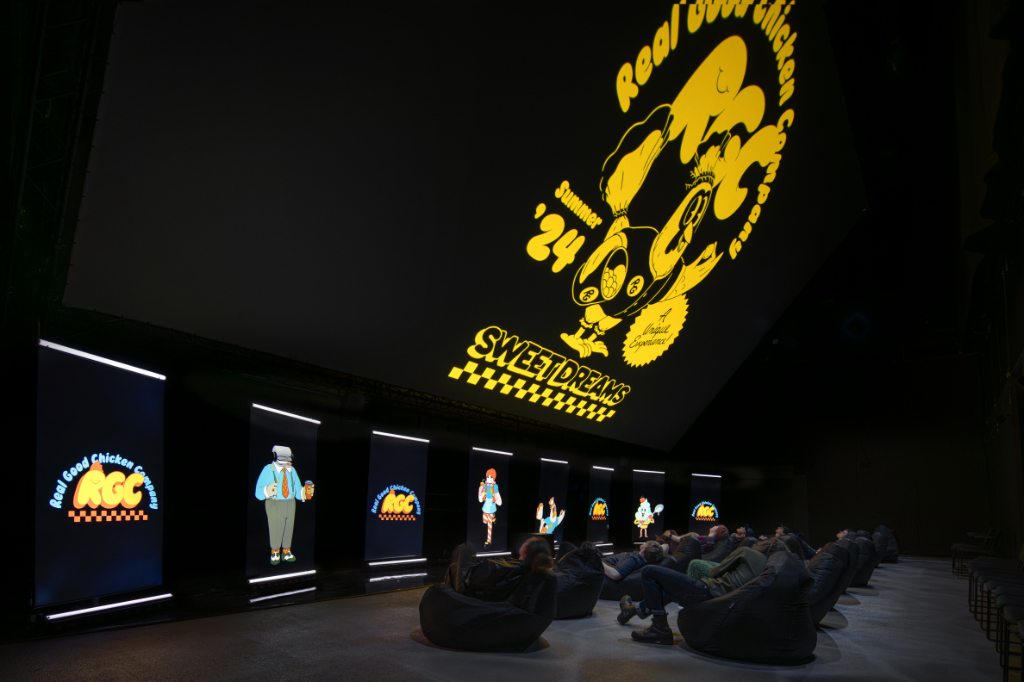
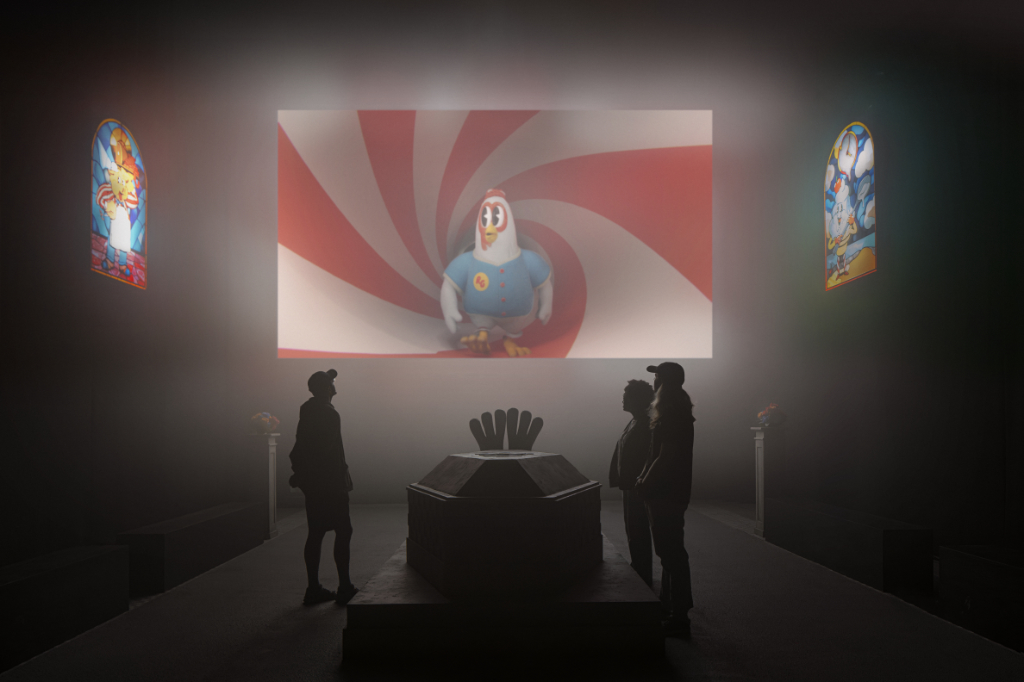
In their previous collaboration, Dream – a live online theatre show set in the forest of Shakespeare’s ‘A Midsummer Night’s Dream’ that utilised actors in motion capture suits and live audience gaming tech, MLF and Factory International honed technological elements, such as VR puppetry, that they have now employed in Sweet Dreams. The use of these highly developed tools in the creation of the familiar but grotesque world in Sweet Dreams gives this latest work an uncanny edge.
The superbly constructed narrative conveyed through immersive, reality-altering technologies alongside the human voice-overs of excellently chosen, celebrities and cult-icons, including US comedian and beatboxer, Reggie Watts, lends an eeriness to the piece which is instrumental in the conveying of its somewhat uncomfortable message. This marriage of the familiar and the absurd, the human and the non-human, is characteristic of Factory International and MLF.
Both Factory International and MLF use their engagement with art and the creative realm to comment on today whilst focusing on the future. Factory International’s main action revolves around the Aviva Studios (opened just under a year ago) and their annual program. The art production team builds on the legacy of Manchester International Festival, one of the world’s leading arts festivals and the first to be entirely focused on the commissioning and producing of ambitious new works by world-renowned artists.
Dynamic, innovative and forward-thinking pieces that reflect the spectrum of performing arts, visual arts and popular culture are given a platform. Artists often observe subtleties and idiosyncrasies about our world that may never make the news. Art can also be an invitation to look at things differently, or to critically reflect on issues, without communicating facts in the way that news publications or documentaries do, cutting through more-so by appealing to our feelings and senses [3]. The experimental artist collective MLF lend their own style to the collection in their sensorially explorative, research-rooted narrative works.
Like Factory International, MLF are focused on collaborations across media, working with artists, scientists, musicians, poets, programmers and engineers to, in their words, leave a slug trail of sensory experiences…through the cosmos [4]. Fusing architectural tools, contemporary imaging techniques and performance with tactile forms, MLF sculpt spaces that lay dormant until animated by playful investigation, reinterpreting the idea of human perception and experience.
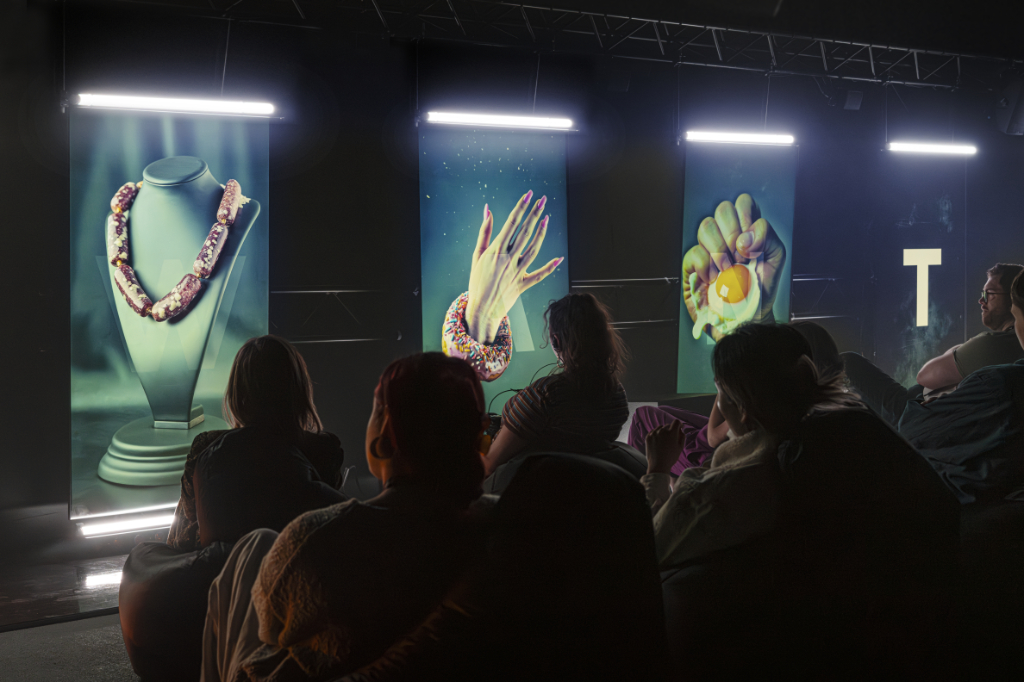
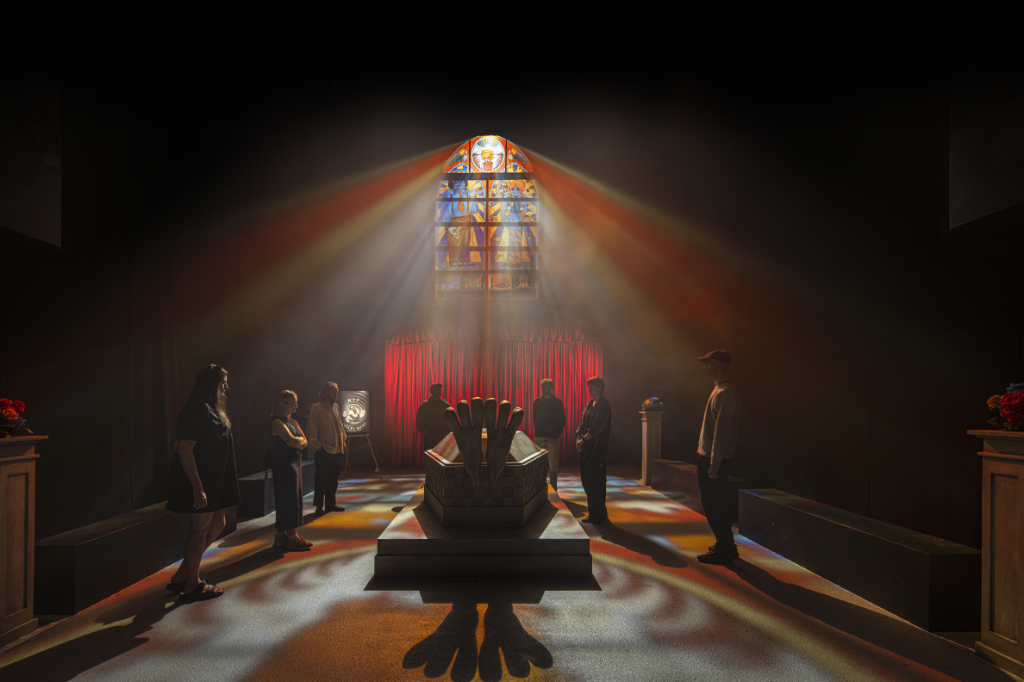
Sweet Dreams is the culmination of years of innovative work from MLF and is a fine example of playful investigation into tough truths conveyed through alternative means. The collaboration of Factory International and MLF in Sweet Dreams is the epitome of utilising cutting-edge visual technology alongside tongue-in-cheek humour to make razor-sharp commentaries on the way the world works.
Moving between the tantalising and the grotesque, the nightmarish and the hilarious, Sweet Dreams takes the viewer on a surreal journey through the hallways of the imagined “Real Good Chicken” company. Accompanied by the fast food conglomerate’s “has-been” mascot, Chicky Ricky, voiced by comedian and actor, Munya Chawawa, the audience is invited to explore an alternative reality in which the fast food world is on the brink of collapse. The animated ghosts of capitalism’s cartoon mascots take us under their wings (some of them, the bird kind, are more apt at this then others) as they roam the realm of the fast food business, asking themselves what people really want and how the food chain plays into this. The cast of fun, if slightly demented, cartoon characters include a boss figure with a rolodex head (voiced by Reggie Watts) and Penny Peckish, a forgotten rag doll mascot made of plastic straws with a forever full milkshake in her hand (voiced by comedian and impressionist Morgana Robinson).
These mascots are fundamental in the transmission of the warning message of the work. Jenks explains: For years, food brands and companies have consistently tried to divert attention from the fundamental and challenging truths about food production, frequently using food mascots to veil these realities. The cartoonish food mascots often symbolise the very animals used in their production, introducing a bizarre element where some mascots are depicted eating themselves. MLF exploits this peculiarity for comedic effect in Sweet Dreams, encouraging audiences to confront a spectrum of issues—from the surreal world of food advertising to the intricacies of global food manufacturing today.
It is clear that there is a moral message behind the work which, as the actor voicing Chicky Ricky, Munya Chawawa, states, will make sure that you [T]hink twice before your next burger… [5], but the message is also one of the possibilities of technology and the arts. MLF and Factory international are clearly fascinated in the future of tech and how art can make use of it to break borders and introduce the new into the existing What’s interesting in this production is the marriage of analogue and digital techniques,[6]. In speaking about this project, Gabrielle Jenks said Advances in technology propel animation in interesting new directions…[A]rtists using CGI and techniques like digital puppetry often eschew this aim to embrace and develop other visual styles. In the case of Sweet Dreams they use both cartoons and CGI to critique the main characters’ reality playing with ideas related to time, memory and nostalgia [7].
In a more general commentary on the future of art and technology and whether the seemingly boundless possibilities made choices for artists harder or easier, Jenks expressed the complexities of the realm which, in her mind, demands admiration and respect, stating: artists embracing new technologies may appear to have endless choice and ease in producing digital work, however developing and scaling works for larger audiences is still prohibitively complex and challenging. In a way, that’s what also makes this field exciting and a priority for us to support [8].
And support it we will! Sweet Dreams is a wonderful example of how art and technology can have one foot rooted in the past and the other firmly in the future. The work uses humour and narrative as well as complex new tech developments to engage the audience and have them consider their realities whilst also entertaining them and making them laugh. Open for just over a month, Aviva Studios is worth a visit to explore your own role in the strange and surreal world of Sweet Dreams.





